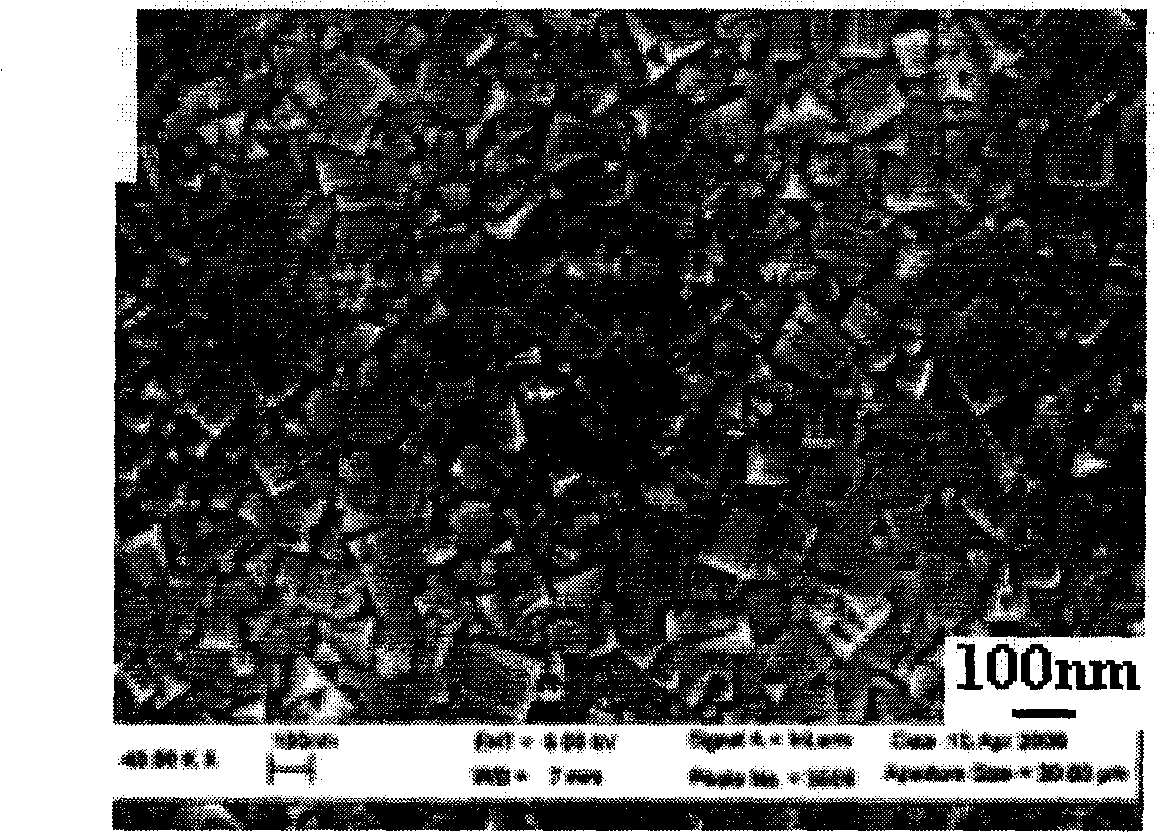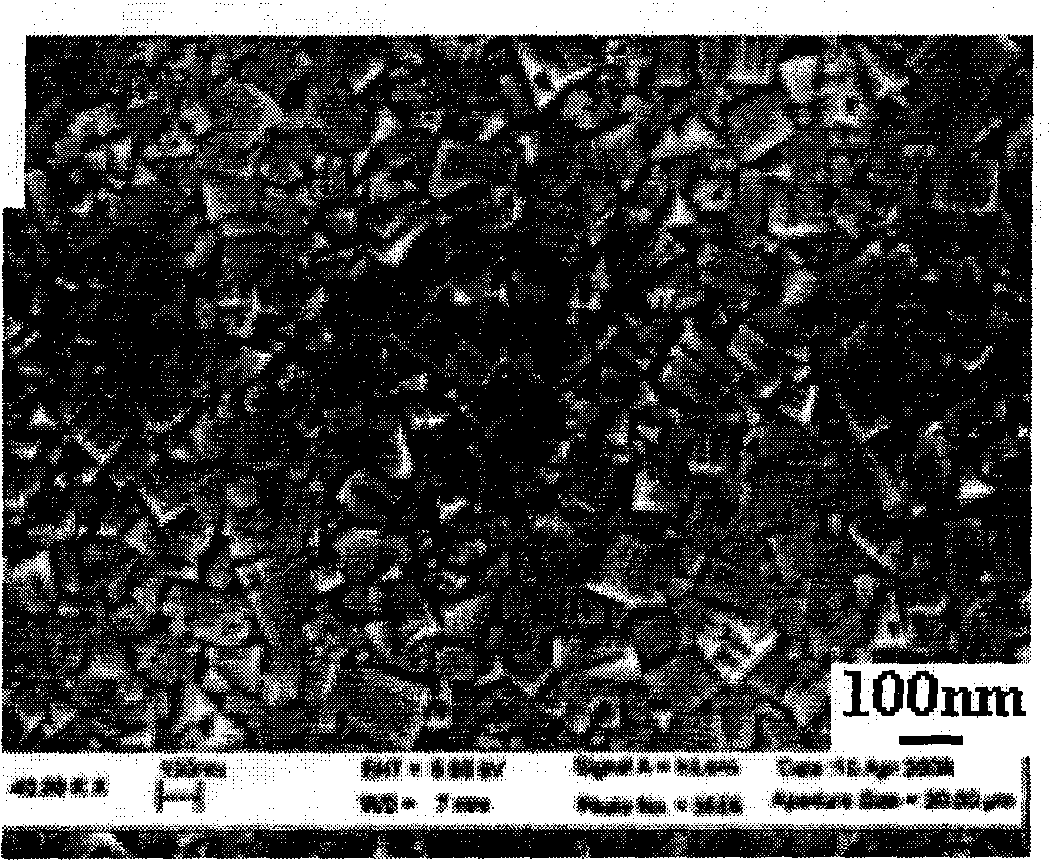Method for preparing potassium-sodium niobate-sodium bismuth titanate nano ceramics
A technology of sodium bismuth titanate and nano-ceramics is applied in the field of preparation of sodium potassium niobate-sodium bismuth titanate nano-ceramics, which can solve the problems that it is difficult for the original powder to reach the nanometer level, and it is difficult to obtain dense nano-ceramics.
- Summary
- Abstract
- Description
- Claims
- Application Information
AI Technical Summary
Problems solved by technology
Method used
Image
Examples
Embodiment 1
[0016] Example 1, using analytically pure niobium pentoxide, sodium carbonate, potassium carbonate, titanium dioxide, and bismuth trioxide powder as raw materials, after drying at 120°C for 24 hours, according to the chemical formula 0.94Na 0.5 K 0.5 NbO 3 -0.06Bi 0.5 Na 0.5 TiO 3 Proportioning and weighing of raw material powder. The obtained powder is directly put into a high-energy ball mill with steel balls without any special treatment. The mass of the added powder is 5% of the mass of the steel balls, and is mechanically alloyed and milled without adding any ball milling medium. The milling time is 8 hours, the rotation speed is 550 rpm; the powder after grinding is calcined at 850°C for 1 hour to make the raw material powder fully react; the calcined material is taken out and crushed, and then high-energy ball milled for 1 hour, and the niobium after ball milling The salt powder is put into a metal mold with a diameter of 10 mm and pressed into shape with a press a...
Embodiment 2
[0017] Example 2, using analytically pure niobium pentoxide, sodium carbonate, potassium carbonate, titanium dioxide, and bismuth trioxide powder as raw materials, after drying at 120°C for 24 hours, according to the chemical formula 0.80Na 0.5 K 0.5 NbO 3 -0.20Bi 0.5 Na 0.5 TiO 3 Proportioning and weighing of various raw material powders. The obtained powder is directly put into a high-energy ball mill with steel balls without any special treatment. The mass of the added powder is 25% of the mass of the steel balls. Mechanical alloying ball milling is carried out without adding any ball milling medium. The ball milling time is 4 hours, the rotation speed is 450 rpm; the powder after grinding is calcined at 800°C for 3 hours, so that the raw material powder can fully react; the calcined material is taken out and crushed, and then high-energy ball milled for 2 hours, and the niobium after ball milling The salt powder is put into a metal mold with a diameter of 5 mm and pre...
Embodiment 3
[0018] Example 3, using analytically pure niobium pentoxide, sodium carbonate, potassium carbonate, titanium dioxide, and bismuth trioxide powder as raw materials, after drying at 120°C for 24 hours, according to the chemical formula 0.90Na 0.5 K 0.5 NbO 3 -0.10Bi 0.5 Na 0.5 TiO 3 Proportioning and weighing of various raw material powders. The obtained powder is directly put into a high-energy ball mill with steel balls without any special treatment. The mass of the added powder is 35% of the mass of the steel balls. Mechanical alloying ball milling is carried out without adding any ball milling medium. The ball milling time is 12 hours, the rotation speed is 350 rpm; the powder after grinding is calcined at 900°C for 2 hours, so that the raw material powder can fully react; the calcined material is taken out and crushed, and then high-energy ball milled for 2 hours, and the niobium after ball milling The salt powder is put into a metal mold with a diameter of 15 mm and p...
PUM
| Property | Measurement | Unit |
|---|---|---|
| size | aaaaa | aaaaa |
| size | aaaaa | aaaaa |
| particle size | aaaaa | aaaaa |
Abstract
Description
Claims
Application Information
 Login to View More
Login to View More - R&D
- Intellectual Property
- Life Sciences
- Materials
- Tech Scout
- Unparalleled Data Quality
- Higher Quality Content
- 60% Fewer Hallucinations
Browse by: Latest US Patents, China's latest patents, Technical Efficacy Thesaurus, Application Domain, Technology Topic, Popular Technical Reports.
© 2025 PatSnap. All rights reserved.Legal|Privacy policy|Modern Slavery Act Transparency Statement|Sitemap|About US| Contact US: help@patsnap.com


